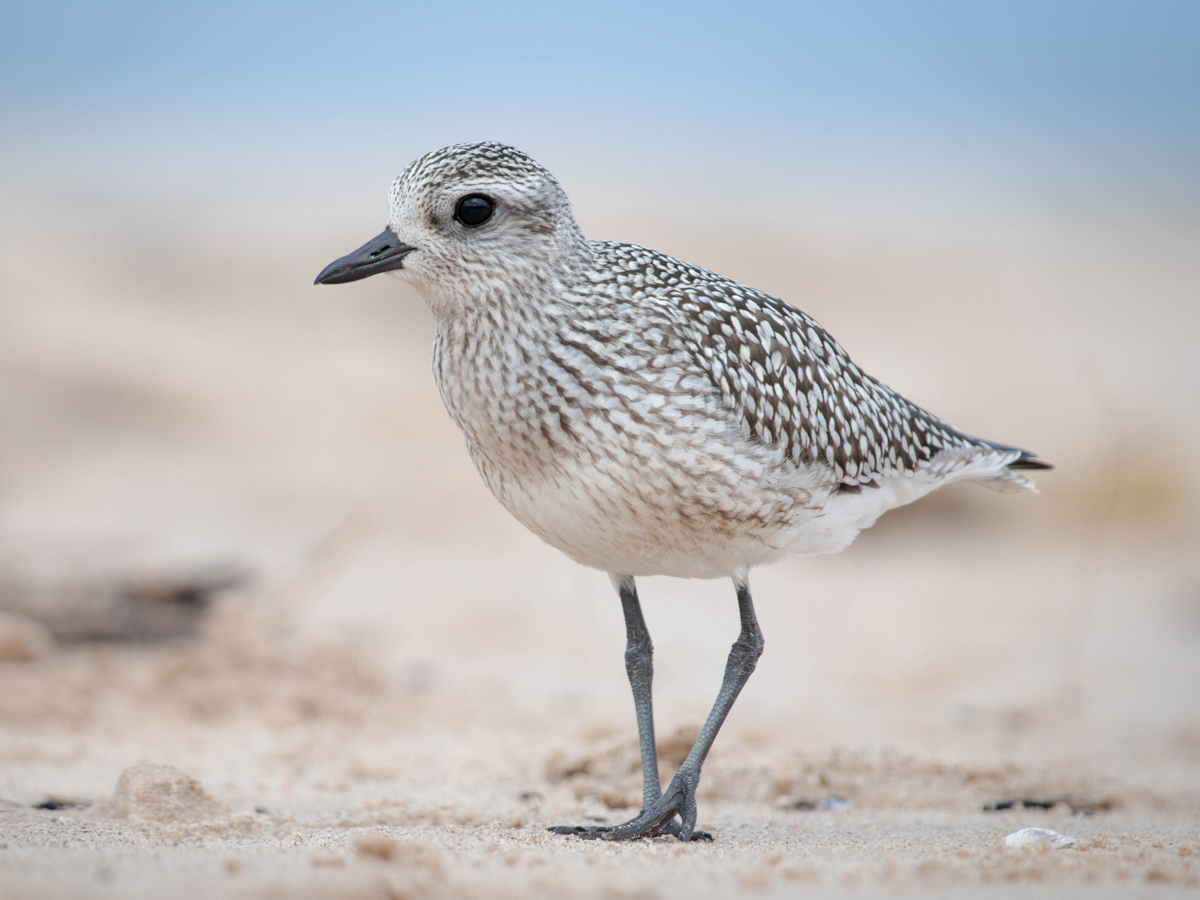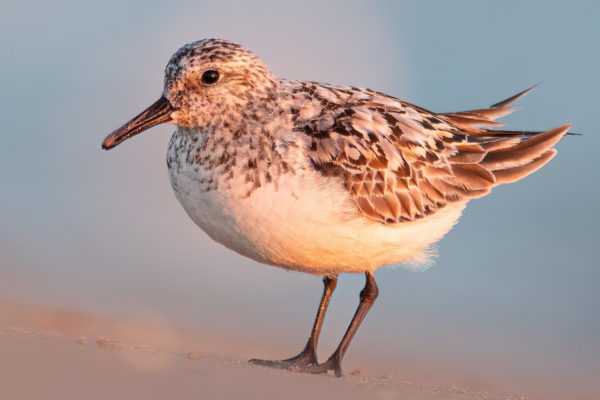Black-bellied Plover and American Golden-Plover




Here are two very tricky lookalike shorebirds, each sporting lovely gray-brown feathers with intricate spotted and barred patterns. Both are long-distance migrants with broad, intercontinental ranges. Black-bellied Plovers and American Golden-Plovers can be found along coastlines and, in migration, on shores and fields throughout much of North America. Nonbreeding plumage is more commonly seen during fall migration, but here are our tips for telling these birds apart in any season:
| Visual Clue | Black-bellied Plover | American Golden-Plover |
|---|---|---|
| Nonbreeding/Immature Plumage | Indistinct white eyeline and smudgy face and breast with overall gray-brown color. | Obvious white eyebrow and dark cap, with a warmer brown wash. |
| Breeding Plumage (male) | Black-and-white spotted back, with a black chest and face. Bold white stripe with indistinct edges runs from forehead to chest. Feathers under the tail are white. | Gold spangled back, with black underparts. Bold, white stripe with cleaner edges extends no further than the chest. Feathers under the tail are solid black. |
| Breeding Plumage (female) | Similar to male, but slightly to markedly faded in color. | Similar to male, but patterns are less crisp, with some mottled white mixed into patches of black. |
| Bill | Thicker, heavier bill. | Slim, short bill. |
Have you got all of that? Put these clues to the test with Bird Academy’s SnapID tool and practice distinguishing among these two shorebird species. You can replay the quiz as many times as you want. Each time you hit “Play Again,” you’ll have new photo matchups to practice on. Just click “Start SnapID Challenge” to get started!
Test Your Shorebird ID Skills
If you’re an ID aficionado, you might want to take a look at a third lookalike, the Pacific Golden-Plover. This broad-ranging shorebird appears in Hawaii and uncommonly on the Pacific Coast, and can be especially difficult to differentiate from an American Golden-Plover.
Interested in going further with the rewarding realm of shorebird identification? Check out our self-paced, online course Be a Better Birder: Shorebird Identification. In this course, you’ll explore ID strategies and species-specific video portraits for 47 shorebird species that regularly appear in the continental U.S. and Canada, then reinforce what you’ve learned with quizzes to help you along the way. Find out what this course has in store with a free sample lesson about the Spotted Sandpiper.

